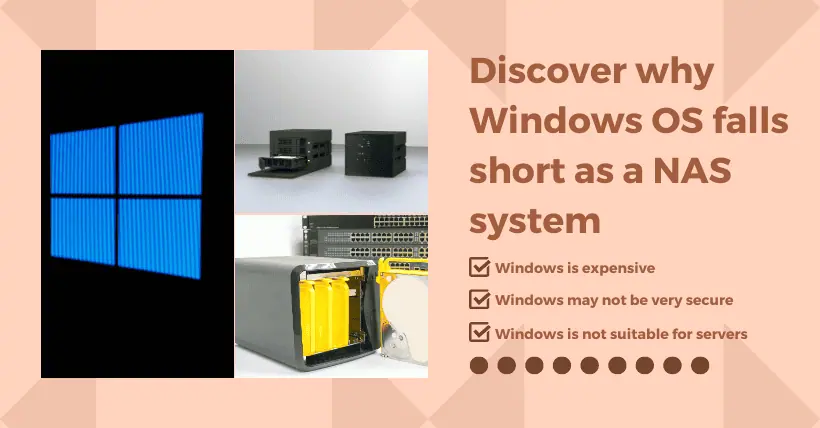Most NAS brands use internally developed operating systems, usually based on Linux. When building your own NAS, it is generally recommended to use a Linux distribution, Unraid, TrueNAS, Open Media Vault, or other operating systems. Windows is typically not considered. Why is this?
1. Windows is not a lightweight operating system
The era of Windows being a lightweight operating system is over, and Windows 11 is no exception. Although there are modified versions of Windows 11, like Tiny11, this doesn’t completely solve the problem. Over the years, Microsoft has added numerous applications and services to its operating system, many of which are not used, and this issue becomes more significant when used in NAS or server environments. The extra burden not only affects system performance, but Windows also lacks many of the features and functionalities needed for NAS.
In terms of system requirements, Windows 11 needs at least a 1GHz processor, which may not be an issue for a DIY NAS. But it also has high memory requirements, needing at least 4GB. Although TrueNAS also has some higher requirements, it fully meets all the functionalities needed for NAS. Using Windows requires more system resources to run all the additional services to reach the level of mainstream NAS operating systems.
2. Windows is expensive
Microsoft requires a license fee to fully use Windows. While technically you don’t need a license to run the operating system as a NAS, it can still be considered a reason to avoid using Windows on a NAS.
3. Windows may not be very secure
As the most popular operating system, Windows is the target of most attacks. It’s not that Windows itself is less secure than Linux, but the probability of vulnerabilities being discovered is higher before Microsoft has the chance to identify the problem, fix it, and release a Windows update (which may require a system restart). Linux and other operating systems generally have better security.
A NAS is used to store large amounts of data and connect to devices on the local network. To protect yourself from potential malware and ransomware attacks, it is best to use the most secure software to run the server, lock it down, and allow only authorized people to connect to the system.
4. Windows is not suitable for servers
Consumer versions of Windows are not designed for server operation, so there are many limitations, such as a 20 SMB connection limit. If more than 20 people want to access data stored on the NAS, there will be bottleneck issues.
Windows also lacks many of the basic features provided by NAS operating systems, such as a DHCP server. Windows Server can be used to manage server-grade hardware, but it is quite expensive.
5. Windows remote management is poor
Windows does not have a web interface for convenient system management. If you prefer using mobile apps or browsers to manage your NAS, storing everything on Windows is not a good choice, as it also requires solutions like TeamViewer to achieve access.
In contrast, NAS manufacturers often provide excellent operating system interfaces that require just a browser tab. Mobile apps are also convenient, allowing you to quickly check NAS status or even perform operations anytime, anywhere.
6. Windows is weak in managing multiple hard drives
While Windows handles a few local drives for storing games, documents, media, and the operating system itself well, it falls short when connecting more drives to a NAS. Setting up RAID-supported storage pools, running multiple applications in Docker containers (which requires Windows Pro), and other tasks may prove this issue.
Running Windows 11 on a NAS device is not what Microsoft designed the operating system for, meaning we will need to add a lot of software to make it work properly during installation.
7. Windows always updates frequently
What frustrates many people is that Microsoft always forces automatic updates, leading to automatic restarts. While you can prevent Windows from automatically restarting your device in some cases, the operating system is not designed to operate without restarts.
This also causes problems when logging into Windows accounts because only a few services start at the login screen, including remote management applications.
8. NTFS is inferior to ZFS or BTRFS
Windows uses the NTFS file system, which is good enough for storing data, but it falls short in functionality and data protection compared to ZFS or BTRFS. Firstly, NTFS and Windows do not have built-in RAID support. You can enable RAID 1, which mirrors the drive and backs up all content on the second drive in the storage pool. But to use other RAID types, you need a physical RAID controller.

Disclaimer: This article is created by the original author. The content of the article represents their personal opinions. Our reposting is only for sharing and discussion purposes and does not imply our endorsement or agreement. If you have any objections, please get in touch with us through the provided channels.



